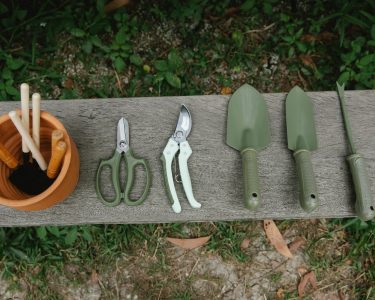Subtitle: Nurturing Your Garden’s Health and Warding off Pesky Invaders
By [Your Name], Staff Writer
2024[City], [State] – Maintaining a thriving garden can be a gratifying endeavor, providing solace and natural beauty. However, a pesky challenge often emerges in the form of garden pests, threatening to undermine the hard work and dedication of even the most diligent green thumbs. Fear not! In this article, we explore expert solutions to help garden enthusiasts combat pest problems and restore their gardens to a flourishing state.
- Identifying the Culprits: A Crucial First Step
Before launching a full-scale attack on garden pests, it is essential to identify the specific intruders causing havoc in your plants. Different pests require different control methods, and misidentifying them can lead to ineffective or harmful treatment. By observing the damage patterns and conducting thorough research, you can pinpoint the exact pest or pests that have taken up residence in your garden.
- Organic Pest Control: Striking a Balance with Nature
In recent years, there has been a growing emphasis on eco-friendly and organic approaches to pest control. Chemical pesticides, once commonly used, are being replaced with safer alternatives that pose minimal risk to human health and the environment. One such method is integrated pest management (IPM), which combines various strategies like biological control, cultural practices, and mechanical techniques to manage pests effectively.
Biological control involves introducing natural predators or parasites that feed on the pests, reducing their population without harming the ecosystem. Ladybugs, praying mantises, and nematodes are some beneficial organisms that can help control common garden pests.
Cultural practices, such as crop rotation, companion planting, and proper watering techniques, can also prevent the proliferation of pests. These practices create an environment that discourages pests while promoting the growth of healthy plants.
Mechanical techniques include physically removing pests or using barriers to protect plants. Handpicking larger insects like caterpillars or installing mesh screens to keep out pests can be effective methods.
- Natural Remedies: Tapping into Nature’s Arsenal
For gardeners who prefer natural remedies, numerous organic solutions can help control pests effectively. Here are a few tried-and-tested methods:
- Neem oil: Derived from the neem tree, neem oil is a natural insecticide that disrupts the life cycle of pests, inhibiting their growth and reproduction.
- Diatomaceous earth: Composed of fossilized remains of diatoms, this fine powder acts as a mechanical pesticide by dehydrating and damaging the exoskeleton of pests like slugs and snails.
- Garlic and chili sprays: A potent combination of garlic and chili can act as a deterrent for many common pests. Preparing a homemade spray and applying it to the plants can help keep unwanted visitors at bay.
- Seeking Professional Advice: When to Call in the Experts
While DIY methods can often solve common pest problems, there are instances where seeking professional advice becomes necessary. If the infestation is severe, persistent, or affecting a large area of your garden, consulting with a professional pest control service specializing in eco-friendly practices can save your plants and provide peace of mind.
- Prevention: The Best Defense
Prevention is the key to maintaining a healthy garden with minimal pest interference. Here are a few preventive measures to adopt:
- Regularly inspect your plants for signs of pests or disease.
- Remove any dead or decaying plant material, as it can attract pests.
- Maintain proper garden hygiene, including cleaning tools and equipment after use.
- Encourage biodiversity by planting a variety of species, attracting beneficial insects that help control pests.
- Use organic fertilizers and soil amendments to promote healthy plant growth,




